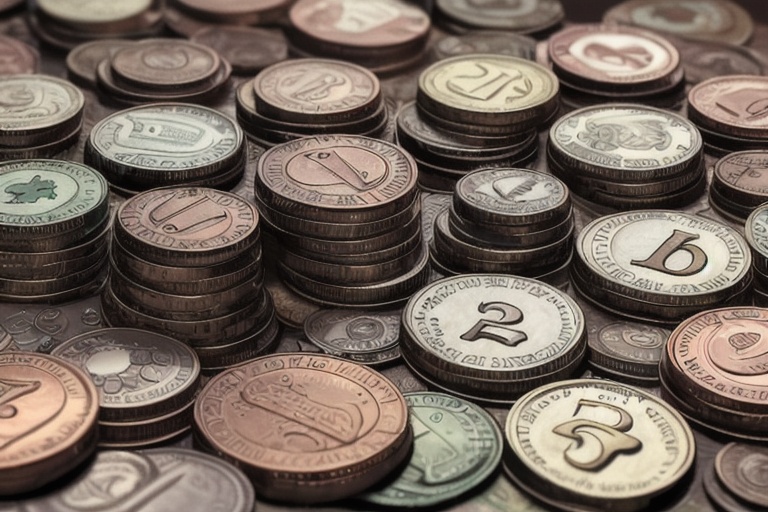If exploring the intricate details of coins and their history strikes a chord with you, then you might find your calling in the world of numismatics—a field that extends far beyond mere coin collecting. A particularly fascinating specialization within this field is that of a certified coin grader. The role of a coin grader involves the nuanced task of evaluating coins, often rarities or historically significant pieces such as the esteemed 1787 Brasher Doubloon or the much-discussed 1943 Lincoln Head Copper Penny. This pursuit combines an appreciation for artistry and history with the tangible reward of a potentially lucrative career path.
If exploring the intricate details of coins and their history strikes a chord with you, then you might find your calling in the world of numismatics—a field that extends far beyond mere coin collecting. A particularly fascinating specialization within this field is that of a certified coin grader. The role of a coin grader involves the nuanced task of evaluating coins, often rarities or historically significant pieces such as the esteemed 1787 Brasher Doubloon or the much-discussed 1943 Lincoln Head Copper Penny. This pursuit combines an appreciation for artistry and history with the tangible reward of a potentially lucrative career path.
Understanding Coin Grading
Coin grading is a meticulous process, vitally important within numismatics. The condition and value of a coin are directly influenced by its grade—a measure of its preservation and authenticity. A coin's grade can spell the difference between an item being a mere collector's piece or a precious gem worth a fortune. This grading is not just about assigning a numerical scale; it's an art form that requires an eye for minute detail, understanding of minting processes, and knowledge of historical context.
When it comes to determining the worth of a coin, a multitude of factors come into play. This includes, but is not limited to, the rarity of the coin, its historical significance, minting errors, metal content, and overall demand within the collector’s market. Expert grading helps clarify the true market value of a coin, which can range anywhere from a few cents to millions of dollars. For instance, a rare, mint-condition coin could easily command a higher price than one that has been circulated and shows signs of wear.
The Path to Becoming a Certified Coin Grader
Becoming a proficient coin grader is not simply a matter of declaring oneself as an expert. It requires dedication, education, and direct experience with coins of various eras and conditions. For enthusiasts looking to formalize their expertise, enrolling in specialized training and gaining certification is an excellent way to start.
The American Numismatic Association (ANA), one of the most respected organizations in the numismatic world, offers an esteemed path for those aspiring to the rank of certified coin grader. By completing the ANA's Numismatic Diploma Program—which comprises six courses covering various aspects of numismatics as well as a written exam—candidates can emerge with a well-rounded and recognized credential.
Additionally, there are numerous other resources and courses available through numismatic societies, online platforms, and community colleges. These educational paths often cover a range of topics from the basics of numismatics to more complex aspects of coin grading. Engaging with seasoned professionals, attending workshops, and participating in coin shows can also provide invaluable practical experience. It is imperative for aspiring graders to thoroughly research these options, ensuring that their chosen path offers credibility and wide recognition within the industry.
The Role of Experience in Coin Grading
Experience is undoubtedly the cornerstone of coin grading. While structured courses lay the groundwork, hands-on experience with actual coins is irreplaceable. Aspiring graders should immerse themselves in the numismatic community, seek mentorship opportunities, and handle as many coins as possible. By examining different coins from various time periods, grades, and countries, one can develop a refined sense for subtleties and variances in coin quality.
As part of this experiential learning, participation in coin clubs and online forums can provide a supportive environment where budding graders can discuss their findings, exchange knowledge, and seek advice from more experienced professionals. Collecting coins personally can also deepen understanding, offering a firsthand glimpse into the joys and challenges that collectors face.
Towards a Rewarding Career
The journey to becoming a certified coin grader is marked by both challenges and achievements. As individuals deepen their understanding of the field, they often find that their passion for numismatics grows in tandem with their expertise. For many, what starts as a hobby can evolve into a full-time career, engaging with collectors, dealers, and auction houses.
Proficiency in grading paves the way for roles in authentication, appraisal, and curation. Certified coin graders may find themselves working for esteemed auction firms, managing valuable collections for museums, or even starting their own business in coin sales and acquisitions. The possibilities are as diverse as the coins that pass through the grader's loupe.
In essence, coin grading is both a discipline and an art. It brings together history, craftsmanship, and economics into a single, unifying pursuit. For those with a passion for coins, a keen eye for detail, and a commitment to lifelong learning, coin grading can be deeply rewarding. Transforming this passion into a profession not only fulfills personal goals but also contributes significantly to the larger numismatic community, ensuring that coin collecting continues to be a vibrant and dynamic field for generations to come.
By embracing education, practical experience, and an unwavering dedication to the craft, the path to becoming a certified coin grader is well within reach. As novices become seasoned experts, they join a community of professionals who preserve the legacy and narratives of our past, captured in the small, often overlooked discs of metal we call coins.
Information for this article was gathered from the following source.

